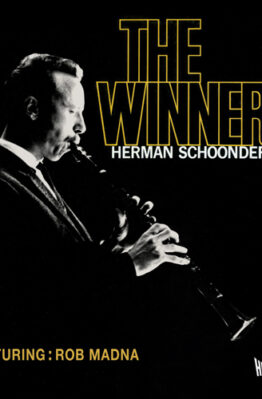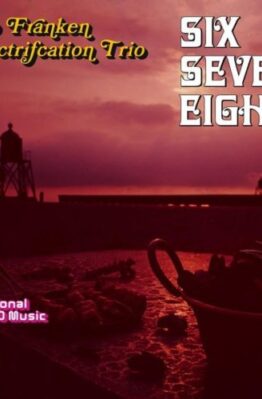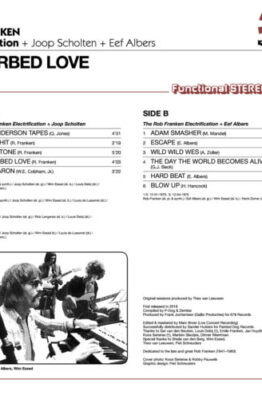Description
Cat#:
LABEL: 678 Records, Netherlands
FORMAT: LP / Limited 500 pcs. / SSE-12002
ARTIST: Jan Huydts Trio
TITLE: Conception
Barcode: 4560312319536
Lineup:
Spec:
This record was produced in analogue form, directly from the master tape, without any digital processing. The cut is made straight from the 1/4-inch analogue master to the cutting lathe.
Tape recorder: Studer A80
Compr./Lim./Console/Equalizers: Neumann
Cutter head: Neumann SX74
Cutting lathe: Neumann VMS80
Lacquer: MDC 14”
EQ: 10 KHz – 0.6 DB Blund
EQ: 5.8 KHz – 0.5 DB Blund
EQ: 63 Hz – 0.6 DB Blund
Cutting engineer: Rinus Hooning at Record Industry, Haarlem, Holland.
Notes
This is actually the second studio recording of this democratic trio, and forty- five years after it was recorded, it is now finally being released. By the end of the 1960’s percussionist Leo de Ruiter and I were tired of playing standards, and fed up with bebop. We’d had it with the Dutch jazz scene, which only adhered to two schools of practice – good or bad. We wanted something else, something different. In Germany we encountered a vacuum. Bass player Alfred “Ali” Haurand had built up a fantastic network of contacts, which provided us with lots of concerts. Often we were on the road for several weeks, sometimes up to a month, and frequently arriving home with a good chunk of change.
I suppose we played a kind of free jazz, but nevertheless we paid strict attention to what the three of us were playing. Free jazz at that time was very “in”. Although we had little or no success back home in The Netherlands, our music took off in Germany. We were always up for practical jokes. Leo, for example, would attach clockwork toy monkeys to his drum kit, and Ali would often play his double bass with the help of a vibrator (bought in a sex shop) added to the strings, and would suddenly and spontaneously burst into song in a passionate vocal tribute to his mother Louise. Childish perhaps, but things were not always without function. Leo had a garden hose with a trumpet mouthpiece on one end that he swung round to give a stunning audio effect. Perhaps we lacked the seriousness and the fighting spirit of some other free jazz groups of that era, but we did have an awful lot of fun. Before a concert, we would stand for five minutes with our foreheads touching each other in the form of a pyramid, to gather our “concentration”. In reality, we were nearly always stoned.
We travelled many miles on those German autobahns in Leo’s old Chrysler station wagon filled to the brim with our musical paraphernalia. The first thing we did on arrival, and before unpacking any of the equipment, was to light up an enormous joint and share it between the three of us. Only then did we start the stage building in preparation for the show. In 1970 we recorded our debut LP ‘Brown Taste’ released on the JG record label.
In 1971 the Hohner Company sponsored our trio for a while. So at that time I performed on a Hohner Pianet, which I thought was a truly terrible instrument. But I guess you have to make the most of what you have, and it was all I could afford at the time (it took another two years before I had the money for the vastly superior Fender Rhodes).The Pianet cannot really hold a tone. Inside are adhesive pads, which in turn are connected to tuned steel reeds. When a key is hit, the reed is released from the adhesive pad and a note is sounded. I connected an echo spring and a wah-wah pedal to add some effects to the original sound. Although the ‘Pianet’ was limited, anything was better than the awful pianos that German jazz clubs offered in those times.
At one point we were approached by a couple of elderly dignitaries from Viersen who had a Dixieland band, and they visited our performance in a Jazz club. Call it intuition, I dunno, but we all felt a little uneasy about the whole thing. Anyway, their Dixie band was going to make a record, and they needed a rhythm section, so they approached us. There was no mention of remuneration of any kind. However, one of these gentlemen had a connection at the Löve Studio in Cologne. Thus we traded our services as session musicians for a whole day free studio time to do whatever we wanted. This turned out to be an excellent deal, since we also wanted to make a new record. Record sales were in those days a large source of income for musicians, and studio time was (and remains) very expensive. In addition, it was a very good studio, a huge space, which was often used to record classical music for German radio.
The recording took place on Wednesday the 12th of May 1971. We started around eleven o’clock in the morning and played on until about nine o’clock that evening. We then carried on mixing the recordings until midnight with two skilful technicians who were very enthusiastic about our music. They also came up with the sound of an orchestra tuning at the start of side two of the record. Since we did all sound production ourselves we had total and unconditional freedom, we were the masters. Instantaneous decisions, reliant on the here and now, were behind the creation of this “monster”.
Leo was on occasions really crazy. It’s probably why we laughed so much together. He was always looking for that shock factor. He insisted on playing one of his own pieces on guitar and spontaneously decided to use his tablas. Since he felt that during the recording a piece of wood should be sawn – to bring everything in balance – he’d also brought along a chainsaw and a couple of blocks of wood. I felt strangely drawn to Leo whilst playing, almost spiritual in nature. I miss him immensely.
On the recording I played a zither, a hand held Autoharp I purchased in Schoemaker’s music shop in Laren (Holland) where it had been in use for store decoration. On the overdubs on side one, I was playing a bass guitar, which I bought from my friend and colleague Koos Serierse. I removed all the frets, so for all intents and purposes it sounded and played like a double bass, which I had often played in the 50’s and 60’s. In the studio also stood a gorgeous grand piano, which unfortunately they had forgotten to tune. That’s me playing a piece from Chopin’s Fantasy Impromptu at the start of side two.
In addition to his double bass, Ali brought an enormous stockpile of percussion instruments along. Each of us sat in our own corner of the studio. Although we weren’t stoned at the start of the proceedings, that quickly changed. We managed to polish off a crate of half litre beers during the session as well. The results of these shenanigans can be heard at the end of side two.
Everything on the record is crammed full of effects. We spent hours on all those overdubs. We were totally engrossed in the creative process, convinced that it should turn out what it actually became. Everything was therefore meticulously prepared in advance to the smallest detail. It’s a fantastic adventure and challenge to record an album in a single day. I remember May 12 of 1971 as being a very positive day.
We didn’t have a clear source of inspiration. We had just completed a set of gruelling tours, having little or no time to actually listen to music. We did listen a lot to Miles Davis though. Driving along the autobahn In Leo’s enormous American wagon we listened to cassettes of ‘Jack Johnson’ (released in February 1971) and Davis’ ‘In a silent way’. In between the more heavy-duty stuff Leo also liked to listen to Dutch sappy folksy tunes by ‘De Heikrekels’ and ‘De Zangeres Zonder Naam’, sometimes for half an hour. He loved it all.
At the end of that long day in the studio in Cologne, we were presented with the master tape. Leo returned to the Netherlands with the tape. The intention was to produce and release the record independently, but that never happened. The first time we played it on the Revox at my house, we weren’t at all impressed with what we heard. We just couldn’t get into it.
And so here we are. Leo de Ruiter died in 2002 and Ali Haurand is still very active in jazz. Forty five years have passed since the recording, and during all that time the tape rested undisturbed in my basement. That is, until Frank Jochemsen and Sander Huibers more recently dug it up and played it again on the very same machine we used all those years ago. Although I can tell you that it took a good deal of persuasion, Frank and Sander were so enthusiastic that I finally consented to the recording at last being released. Although my opinion has somewhat mellowed in the subsequent years, I personally would never purchase this particular record. – Jan Huydts





